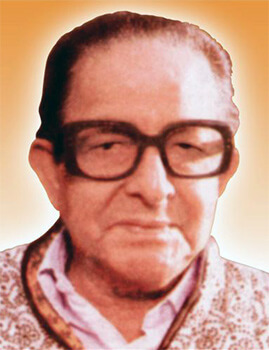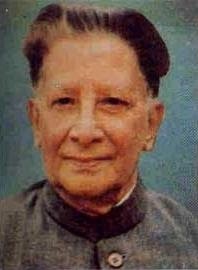Introduction:
Nabakanta Barua, widely recognized as ‘Ekhud Kokaideu’ among Assamese people, was a distinguished novelist and poet who played a significant role in modern Assamese literature. Born on December 29, 1926, in Guwahati, he was the son of Nilakanta Barua, a school inspector and later a teacher, and Swarnalata Baruani. His family initially lived in Upper Assam before moving to Puranigudam and finally settling in Nagaon town.
Early Life and Education
Barua began his education in a local school and later joined Government Mojolia School. In 1933, he was admitted to Nagaon Government Boys’ School, where he completed his matriculation in 1941. He then enrolled at Cotton College, but due to health issues, he lost two years. In 1943, he joined Shantiniketan in West Bengal and completed his Bachelor of Arts degree with English Honors in 1947. Later, in 1953, he obtained his Master’s degree from Aligarh Muslim University.
Teaching Career
His professional career began in Uttar Pradesh at A.K. College in Sokohabad. Later that year, he was transferred to Jorhat’s Jagannath Barooah College. In 1954, he joined Cotton College, where he taught until 1964. From 1964 to 1967, he worked as an officer of English education at Assam Madhyamik Shiksha Parisad. He returned to Cotton College and served as vice-principal until his retirement in 1984.
Contributions to Assamese Literature
Nabakanta Barua was not just a poet but a multifaceted writer whose contributions to Assamese literature included poetry, novels, essays, short stories, and children’s literature. He authored 39 books, including:
Poetry Collections:
- Ratnaakar
- Jati Aaru Keitaamaan Sketch
- Mur Aaroo Prithiveer
- Dolongot Taamighoraa
- Selected Poems (in English)
Novels:
- Kapilipariya Sadhu (1953)
- Kokadeutar Har (1973)
- Garama Kunwari (1980)
- Manuh Ataibor Dweep (1980)
- Apadartha (1981)
- Patachara
Children’s Literature:
- Akharar Jhakhala (1958)
- Shiyalee Palegoi Ratanpur (1956)
- Hat Ukare Hu (1960)
- Kishore Ramayan (1987)
- Kishore Upanishad
- Umala Gharar Puthi
Plays:
- Eti Geetar Janma Hal
- Sukh Jatak
- Abhirupananda
- Patachara
He also edited two children’s magazines, Jonbai (1950-62) and Pohar (1969-70), along with the literary-cultural magazine Shiralu (1983-85).
Literary Influence and Recognition
Nabakanta Barua, along with Amulya Barua and Hem Barua, was considered a pioneer in modern Assamese poetry. His works reflected contemporary social issues and human emotions with depth and sincerity. His notable poems like Polokh, Monot Porne Arundhati, Norokot DonJuan, and Crussot DonJuan remain widely appreciated and recited.
Awards and Honors
Barua’s exceptional literary contributions were recognized with numerous prestigious awards, including:
- 1974: Assam Prakashan Parisad Award (Mur Aaroo Prithibir)
- 1975: Sahitya Akademi Award (Kokadeutar Har)
- 1976: Padma Bhushan (for Literature & Education)
- 1993: Assam Valley Literary Award
- Soviet Land Nehru Award
- Kabir Samman
His novel Kapilipariya Sadhu was translated into 14 languages by the National Book Trust (NBT), making his work accessible to a broader audience.
Role in Assamese Literature and Culture
Barua was actively involved in literary organizations and served as the president of Assam Sahitya Sabha’s Dhing Adhibashan in 1968 and presided over the Bishwanath Chariali convention in 1990. His dedication to literature was evident through his relentless efforts in writing, editing, and promoting Assamese literature globally.
Final Years and Legacy
Even in his later years, Barua continued to contribute to Assamese literature. His last collection of poems, Dalongat Tamighora (2000), was a testament to his ever-evolving literary prowess. On July 14, 2002, the legendary poet and writer passed away, leaving behind a rich legacy of literature that continues to inspire generations.
Conclusion
Nabakanta Barua was more than just a writer; he was a cultural icon who shaped modern Assamese literature. His works remain relevant, thought-provoking, and influential, making him one of the greatest literary figures in Assam. His stories, poems, and essays continue to resonate with readers, ensuring that his legacy endures for years to come.
FAQ’s:
Q 1. Who was Nabakanta Barua, and why is he famous?
Nabakanta Barua was a renowned Assamese poet, novelist, and literary figure known for his contributions to modern Assamese literature. He is widely recognized for his poetry, novels, children’s literature, and essays.
Q 2. What are some of Nabakanta Barua’s most famous works?
Some of his notable works include Ratnaakar, Kokadeutar Har, Kapilipariya Sadhu, Mur Aaroo Prithiveer, and Dolongot Taamighoraa.
Q 3. What awards did Nabakanta Barua receive for his literary contributions?
He received several prestigious awards, including the Sahitya Akademi Award (1975), Padma Bhushan (1976), Assam Valley Literary Award (1993), and Soviet Land Nehru Award.
Q 4. What was Nabakanta Barua’s role in Assamese poetry?
He was a key figure in modern Assamese poetry, alongside Amulya Barua and Hem Barua, and introduced contemporary themes and unique styles to Assamese literature.
Q 5. What was Nabakanta Barua’s contribution to children’s literature?
He wrote several children’s books, including Shiyalee Palegoi Ratanpur, Kishore Ramayan, and Hat Ukare Hu, filling a gap in quality Assamese literature for young readers.
Q 6. What were Nabakanta Barua’s contributions outside of poetry?
Apart from poetry, he wrote novels, essays, plays, and short stories, and edited literary magazines like Jonbai and Pohar.
Q 7. What was Nabakanta Barua’s role in Assamese cultural organizations?
He served as president of Asam Sahitya Sabha’s Dhing Adhibashan (1968) and presided over the Bishwanath Chariali convention (1990), playing a crucial role in promoting Assamese literature.
Q 8. What was Nabakanta Barua’s educational background?
He studied at Shantiniketan (West Bengal) and later completed his Master’s degree from Aligarh Muslim University.
Q 9. When and how did Nabakanta Barua pass away?
He passed away on July 14, 2002, leaving behind a rich literary legacy.
Q 10. Why is Nabakanta Barua’s literature still relevant today?
His works explore themes of society, humanity, and modernism, making them timeless and influential in Assamese literature.












